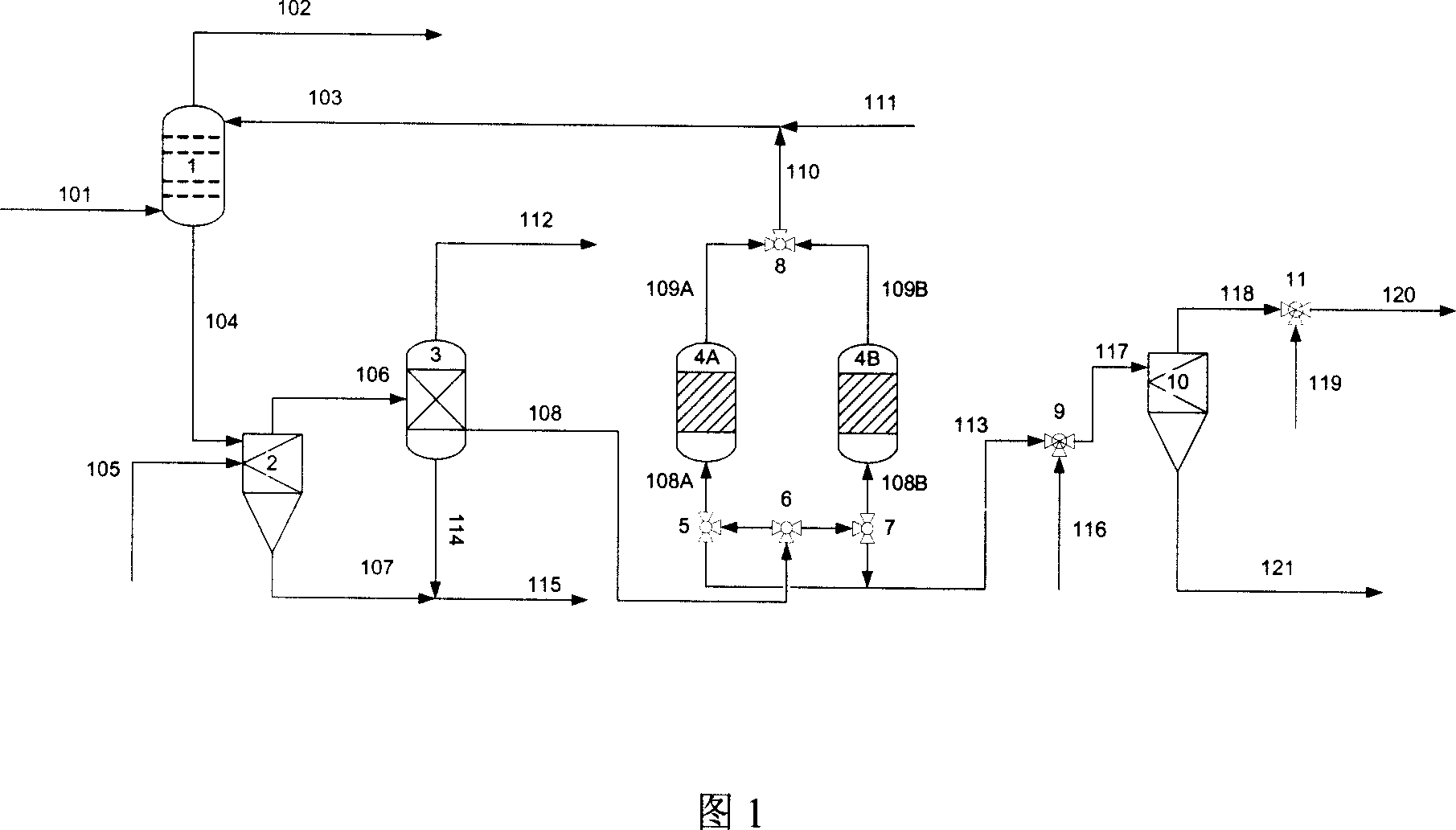Method for treating wastewater of dilute thiamine
A treatment method and technology for wastewater, which are applied in water/sewage treatment, heating water/sewage treatment, neutralized water/sewage treatment, etc., can solve the problems of high treatment cost and high energy consumption of dilute ammonium sulfate wastewater
- Summary
- Abstract
- Description
- Claims
- Application Information
AI Technical Summary
Problems solved by technology
Method used
Image
Examples
Embodiment 1
[0020] Adopt the flow process of Fig. 1, the weight percentage of one-stage acrylonitrile quenching dilute ammonium sulphate wastewater is composed of: acrylonitrile 0.19%, hydrocyanic acid 0.19%, water 78.36%, ammonium sulphate 13.82%, polymer 7.44%, wherein also contains a small amount of catalyst dust. After the waste water is separated from the solid and liquid by the hydrocyclone, the catalyst dust and most of the polymers are removed, and the mass composition of acrylonitrile 0.20%, hydrocyanic acid 0.20%, water 84.67%, ammonium sulfate 14.93% and trace polymers are obtained. liquid and adjust its pH value to 6.6. The clear liquid is stripped by 20 theoretical plate strippers. The top temperature of the stripper is 87.5°C and the temperature of the bottom of the tower is 110°C. The weight composition of the top of the tower is hydrogen An organic solution of 35% cyanic acid, 30% acrylonitrile, and 35% water. The ammonium sulfate solution with a concentration of 18% by we...
Embodiment 2
[0022] According to each step of embodiment 1 and operating condition, just change clear liquid pH value to be 7.5, resin exchange capacity is 0.5 millimole per gram of resin, draw out ammonium sulfate solution at the 4th column plate place side line at tower kettle top, increase stripping The extraction amount at the top of the tower is 10% of the raw material weight, and the mass composition of the top of the tower is 25% of hydrocyanic acid, 20% of acrylonitrile, and 55% of water. ammonium sulfate solution, the remaining feed waste water flows out from the tower kettle, and lime is added to ammonium sulfate to stir to produce dihydrate gypsum and ammonia water. After solid-liquid separation, the concentration obtained is dihydrate gypsum precipitation and the weight percentage concentration is 25%. of ammonia. The processing method of dihydrate gypsum and ammoniacal liquor is with embodiment 1.
PUM
 Login to View More
Login to View More Abstract
Description
Claims
Application Information
 Login to View More
Login to View More - R&D
- Intellectual Property
- Life Sciences
- Materials
- Tech Scout
- Unparalleled Data Quality
- Higher Quality Content
- 60% Fewer Hallucinations
Browse by: Latest US Patents, China's latest patents, Technical Efficacy Thesaurus, Application Domain, Technology Topic, Popular Technical Reports.
© 2025 PatSnap. All rights reserved.Legal|Privacy policy|Modern Slavery Act Transparency Statement|Sitemap|About US| Contact US: help@patsnap.com

